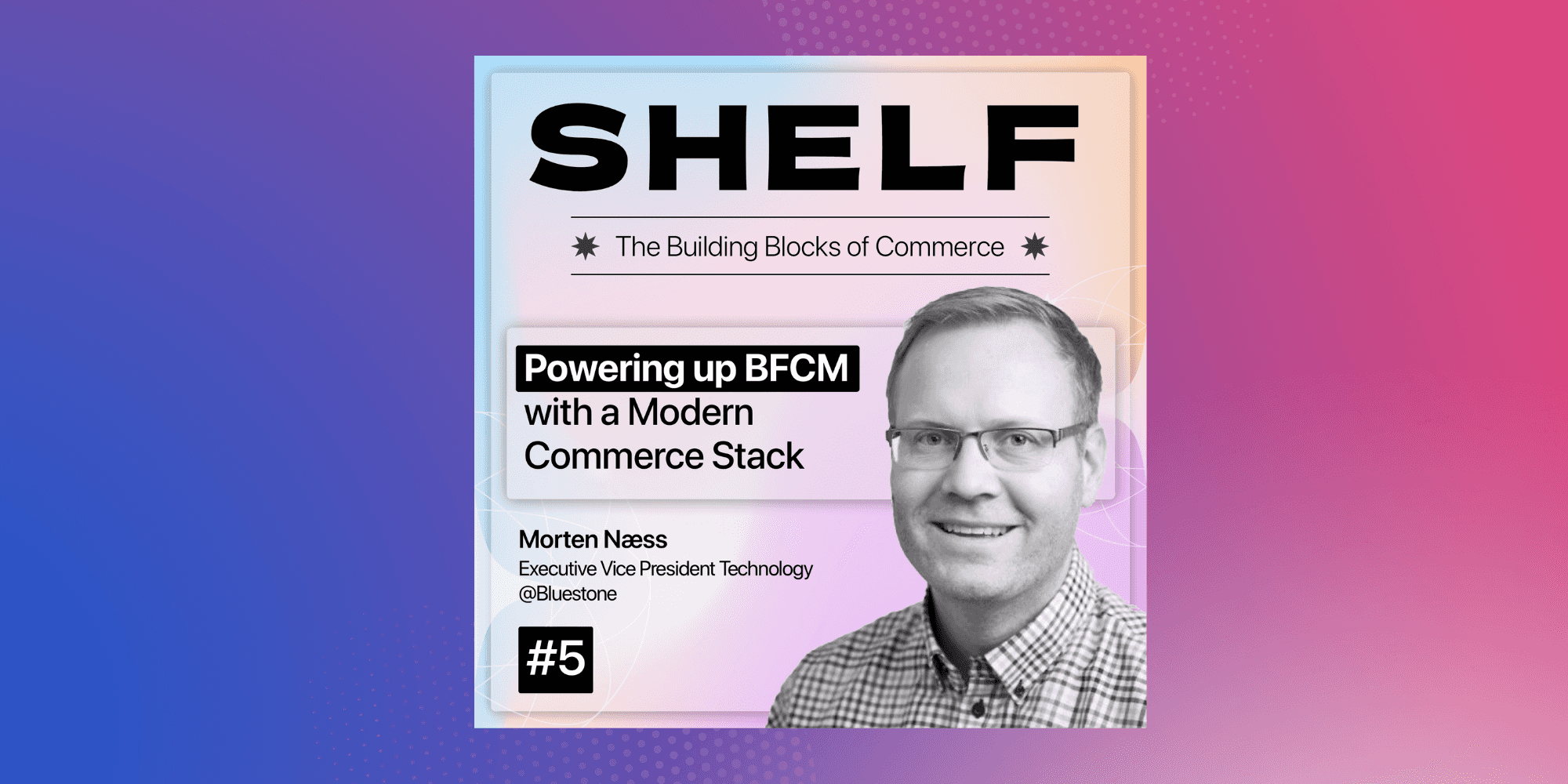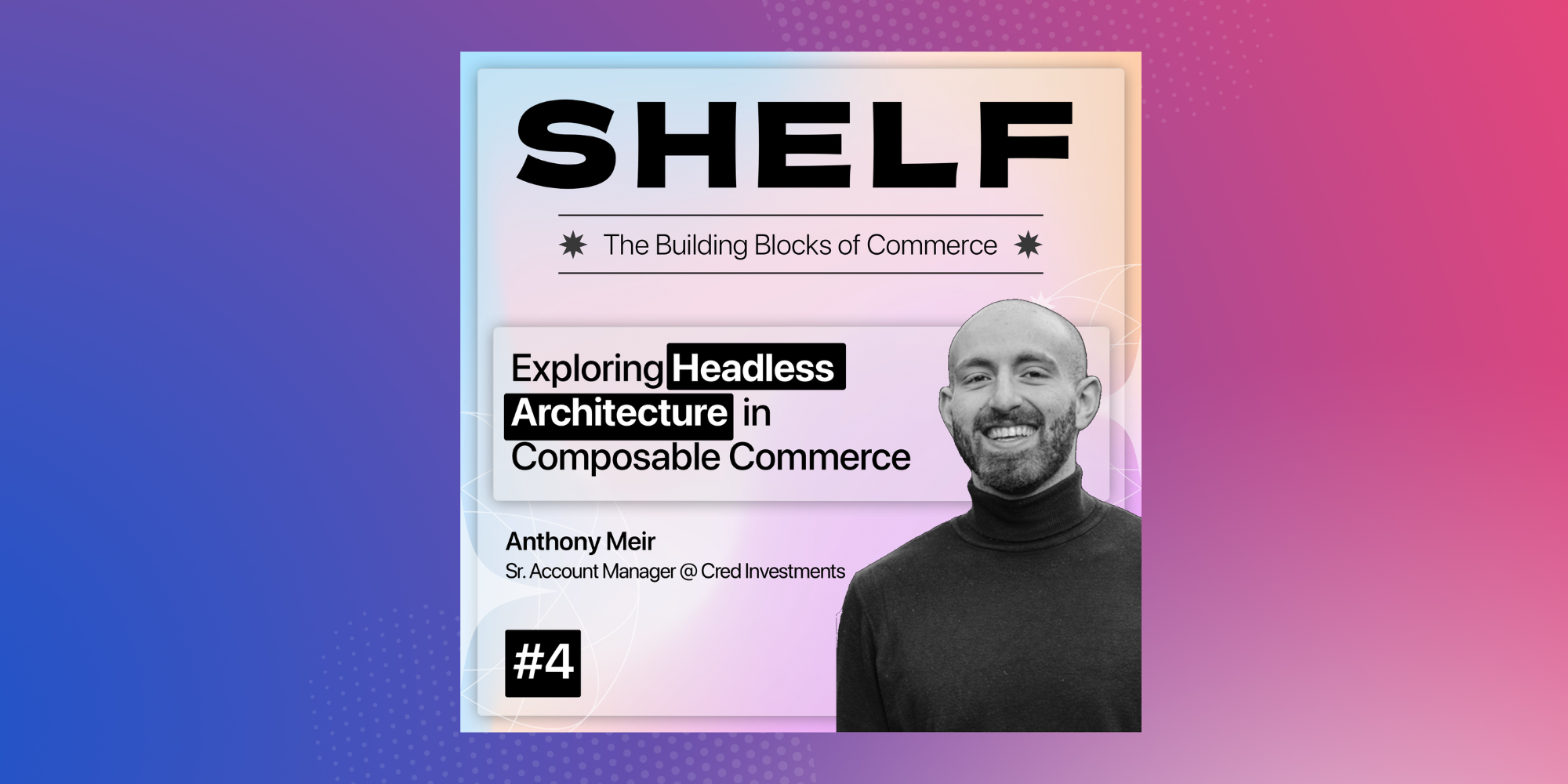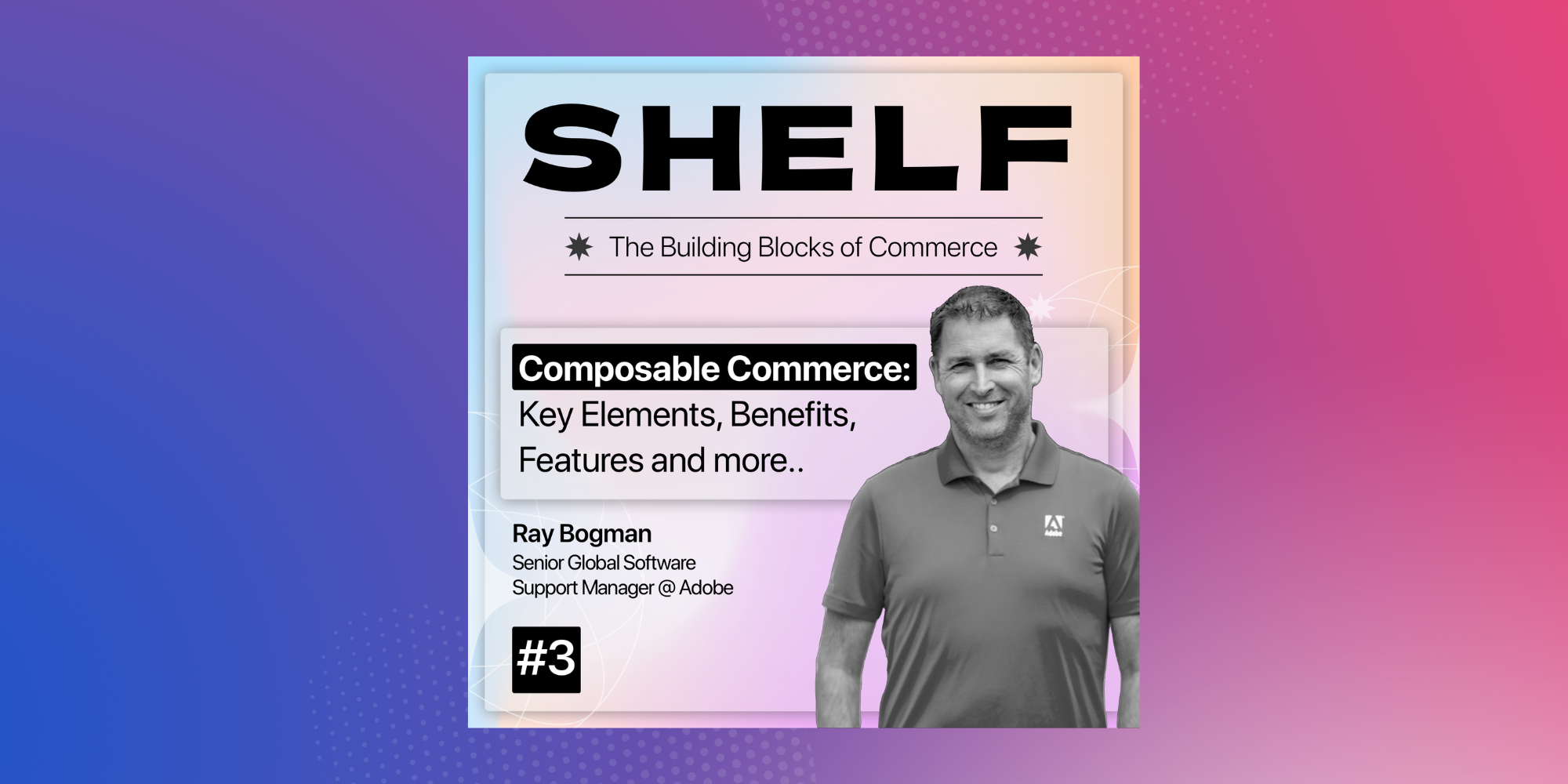Morten is the EVP of Technology at Bluestone PIM. He is also the Head of the MACH Alliance Tech Council, which advocates the use of composable architectures for modern enterprises. In this episode, we break down the possibilities that a modern composable stack can bring for growing brands during peak seasons — let’s say, Black Friday Cyber Monday - and how it’s so exceptional in handling traffic and other storefront challenges during such as high-traffic seasons.
💬 Key takeaways from the conversation
- The industry is undergoing a significant shift towards composable solutions, which is seen as the future for many industries.
- The goal is to provide a consistent customer experience across all channels, which is why the concept of headless architecture is important.
- Headless architecture facilitates maintaining a uniform look and feel across different channels and enables easy implementation of small front-end changes.
🎙 Diving in...
Kaus
Hi, everybody. We are with Morten, who is the EVP of Technology at Bluestone PIM.
And for me, it's super interesting because it's not every day that you get to talk to someone who has really deep experience in e-commerce - more than 20 years in ecommerce and technology. So very exciting to speak to you, Martin. Thank you for coming to the show with us.
Morten
Well, thank you for having me.
Kaus
And we'll dove right in into the very interesting topic we're going to talk about today - The role of modern commerce during peak seasons and during higher revenue days.
Tell us a bit about yourself.
Morten
Well, as the technology, I am responsible for our product and also the roadmap of our product. I'm also often involved in late stages of the sales process and I help and guide clients setting up composable architecture, often involved in the guiding the clients with the with setting that up. So that's very briefly. I like the EVP role that I have.
It has been a fantastic journey. And for us as a as a like in this context, small PIM company, it has been life-changing really because we've always known from the start when we started making the product that we were very technically strong, but it was very hard to communicate that to the clients and the alliance is definitely helped us explain to clients why it is important to think like this, why the future is composable.
Kaus
I think this, even post-pandemic – read like the last two or three years – have seen an interesting shift suddenly from the pre-pandemic era to during the pandemic and then again from the pandemic to post-pandemic. Do you think this whole quick shifts in the way the industry had to adapt to really different kind of, you know, consumer behavior in a very short, accelerated amount of time?
Morten
So it has definitely changed and that has changed for also the clients a lot. And that has made us susceptible to too new technology. And also, that means that you will need flexibility.
So it is a different game than it was both on the B2B side, which was I was talking about now. But but also on the B2C side, right. You see all about, you know, social commerce or commerce everywhere. These things, you know, the hunger for flexibility is definitely there.
Kaus
Yeah. You know, speaking of flexible body and innovation, right. People are talking about the modern stack for e-commerce and for retail. And then, within that, the modern stuff for e-commerce. Could you help our audience kind of understand what do people mean when they say, hey, here is the modern stack for e-commerce?
Morten
So well, let's start with the legacy stack or what we have had. We're like the monoliths of the world where you had like everything into one system and that was great for a lot of purposes. But the problem was like, like we talked about now the flexibility of these solutions they were usually or they are, they are still great for their purpose, you know, but they are very big, very expensive and very low in flexibility.
That's that's sort of the problem. That's the interesting part here now, because we have sort of a perfect storm now where we have like I said, the tech monoliths are not flexible enough. You have all these new needs, social commerce, commerce everywhere, all these needs that. So you need fast moving, best of breed solutions that are customizable and that are able to handle this, these new needs.
And like I said, what we have now is the perfect storm, because now we have global cloud providers that are also ready. They're mature enough to have integrations with low code or no codes. It's much easier to integrate between best-of-breed systems. And that's really what the Mac Alliance is also all about. They we're thinking in the same way we are based on the same technology thought, and that makes it very easy to integrate.
So that brings us to what the new stack is, and that is what we call composable commerce, which is a whole universe of composable parts or best-of-breed solutions that you that are fit for purpose exactly what you're trying to achieve. And like I said, we have a perfect store now where like the technology is there, the integrations are ready, and now we have vendors also providing this.
Kaus
Yeah. And leading on from that there's actually and shows is very relatable for a lot of what you just mentioned very relatable for a lot of folks who have been running high revenue days for a while, and they have probably seen this shift in mindset and that's about your store, for example, as a channel, brands have multiple touchpoints today. What is an example of this role that, you know, composable or headless systems actually play in ensuring that this experience across different touchpoints and across the different channels are also seamless for brands?
Morten
Yeah, I think that that touches on the heart of this because what you want is that the customer-facing channels is the same as the same experience. No matter where you go. This is exactly why we have headless, because with the monoliths everything is connected to everything and it takes months or years or whatever to make something new happen, right? And it's not fast enough.
So you need a thin layer on top. And that's what the headless layer is in a composable world. And it's made for being like making it easy to have the same look and feel across different channels and also very easy to adjust and easy to, you know, do a, B, testing and do yeah, do all these small micro changes that you need to do in the front end.
And I think that that's the biggest difference is I think that maybe that's even where this came from because you saw that you had this huge need for quick change on the front end like any channel and that was connected to the back end. So that was very cumbersome and very hard to do. So I think that that's maybe one of the things that initiated this whole movement of, you know, breaking up what makes sense to break up.
Yeah, it's really one of the key differences is that you will with the headless solution, you will be able to very quickly change your frontend and make it uniform across all channels.
Kaus
That leads me to another quick question. What are how do brands, who looks at it, have decided that we are going composable? This is the right time for us. We don't want to wait for our eventual future and we're going to take the plunge today. What advice would you give them to ensure scalability and being able to use such a modern stack to its best?
Morten
I think that the key here is, is the competence in the people. If it's internal, that's great. But at the least external help if you don't know what what this is, because it is with this as with everything and there is no free lunch. You don't like, you don't just buy something and then that solves everything you have to understand.
And especially, I think with market architecture and systems, you have to understand what you're doing in order to take full advantage of it. We've seen a lot of examples of that, people just buying one component and not understanding the power of that. And there is not really any power in that. If it's just a standalone. The whole point is that it's composable, it's made to work together with other moving parts.
Kaus
That definitely is a great, I think round-up of our conversation. Any Parting Thoughts awards that you definitely want to share before we close for the day?
Morten
We see a big shift in the industry moving towards composable, and we feel very strongly that this is the way forward for many industries. And yeah, it's just exciting to see how this idea is catching on. And also what I love about the MACH Alliance is there are a lot of competitors within the alliance, but we're working together.
Like 15 years ago, if you saw a competitor, you were just eyeballing them and just, you know, and now it's like we're working together for a common goal in the same groups and stuff like that. It's just a shift in the mindset that is just fantastic. It's just much more open, and everyone is working towards the same goal.
And I love that.
Kaus
Thank you so much for it. It was super interesting. And also, I love that we kept going back to the same analogy, but I think it sticks, and we should definitely reinforce more of that. Thank you so much for your time, and really lovely talking to you. We hope to bring you back again some other time and dig down into a little bit more into MACH Alliance and all the different, you know, parts of it and message and what does allow teams can leverage all of that but for today, that's a wrap.
Thank you.





